

Natural Resources
Conservation Service
Ecological site R081CY360TX
Low Stony Hill 29-35 PZ
Last updated: 9/19/2023
Accessed: 12/22/2025
General information
Provisional. A provisional ecological site description has undergone quality control and quality assurance review. It contains a working state and transition model and enough information to identify the ecological site.
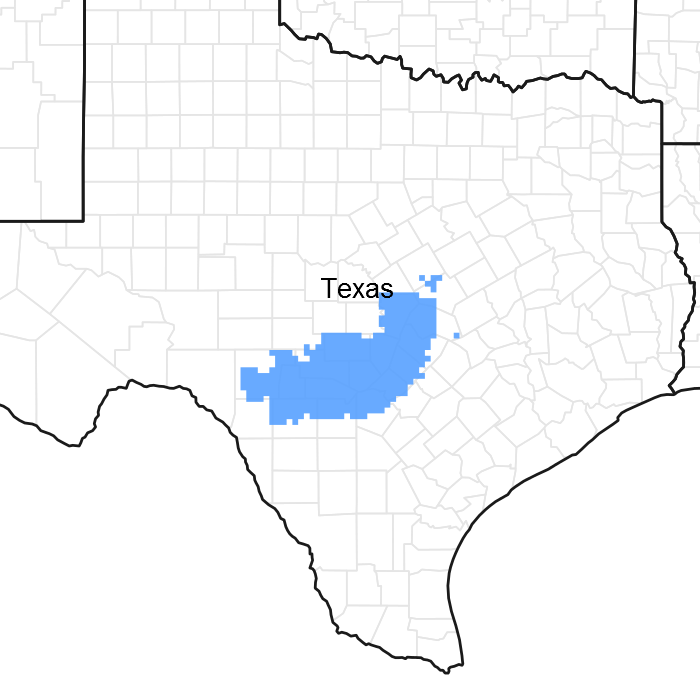
Figure 1. Mapped extent
Areas shown in blue indicate the maximum mapped extent of this ecological site. Other ecological sites likely occur within the highlighted areas. It is also possible for this ecological site to occur outside of highlighted areas if detailed soil survey has not been completed or recently updated.
MLRA notes
Major Land Resource Area (MLRA): 081C–Edwards Plateau, Eastern Part
This area represents the eastern part of the Edwards Plateau region. Limestone ridges and canyons and nearly level to gently sloping valley floors characterize the area. The elevation is 400 feet (120 meters) at the eastern end of the area and increases westward to 2,400 feet (730 meters) on ridges. This area is underlain primarily by limestones in the Glen Rose, Fort Terrett, and Edwards Formations of Cretaceous age. Quaternary alluvium is in river valleys.
Classification relationships
Major Land Resource Area (MLRA) and Land Resource Unit (LRU) (USDA-Natural Resources Conservation Service, 2006)
National Vegetation Classification/Shrubland & Grassland/2C Temperate & Boreal Shrubland and Grassland/M051 Great Plains Mixedgrass Prairie & Shrubland/ G133 Central Great Plains Mixedgrass Prairie Group.
Ecological site concept
These sites occur on very shallow and shallow clay soils over indurated limestone bedrock. The reference vegetation includes tall and midgrasses along with numerous forbs and scattered mottes of live oak. Without fire or brush management, juniper and other woody species are likely to increase across the site.
Associated sites
| R081CY357TX |
Clay Loam 29-35 PZ The Clay Loam ecological site will be encountered down the slope from the Low Stony Hill ecological site. The Clay Loam ecological site will be associated more with the concentrated drainage that low stony hill runoff will enter. |
|---|---|
| R081CY358TX |
Deep Redland 29-35 PZ The Deep Redland ecological site usually has post oak with a reddish colored soil that is slightly acidic to neutral. |
| R081CY356TX |
Blackland 29-35 PZ The Blackland ecological site has a higher production and deeper soils. |
| R081CY361TX |
Redland 29-35 PZ The Redland ecological site is located on similar positions but has red subsoil with less carbonates and rock fragments. |
| R081CY363TX |
Steep Rocky 29-35 PZ The Steep Rocky ecological site is on the steeper side slopes below the Low Stony Hill site. |
| R081CY561TX |
Loamy Bottomland 29-35 PZ The Loamy Bottomland ecological site receives runoff water from the Low Stony Hill. |
| R081CY574TX |
Shallow 29-35 PZ The Shallow ecological site is on similar positions but has less fragments on the surface and in the subsurface. |
| R081CY359TX |
Gravelly Redland 29-35 PZ The Gravelly Redland ecological site is located on similar positions but has red subsoils with less carbonates. |
Similar sites
| R081CY574TX |
Shallow 29-35 PZ The fact that both of these sites are shallow in nature that are underlain by limestone make them similar. The Shallow ecological site generally has more depth and less surface bedrock. |
|---|---|
| R081CY355TX |
Adobe 29-35 PZ The Adobe ecological site has a higher pH soil. |
Table 1. Dominant plant species
| Tree |
(1) Quercus fusiformis |
|---|---|
| Shrub |
Not specified |
| Herbaceous |
(1) Schizachyrium scoparium |
Physiographic features
This is an upland site. Slope gradients are mainly 1 to 8 percent but can range up to 12 percent. Slopes exceeding 12 percent are classified as Steep Rocky. The very shallow to shallow, well-drained, moderately slow permeability soils of this site were formed in residuum over interbedded limestone, marls, and chalk. The site will receive runoff from the associated Steep Rocky Ecological Site.

Figure 2. Block Diagram of Low Stony Hill Site
Table 2. Representative physiographic features
| Landforms |
(1)
Plateau
> Ridge
|
|---|---|
| Runoff class | Medium to very high |
| Flooding frequency | None |
| Ponding frequency | None |
| Elevation | 1,000 – 2,400 ft |
| Slope | 1 – 8% |
| Aspect | Aspect is not a significant factor |
Table 3. Representative physiographic features (actual ranges)
| Runoff class | Not specified |
|---|---|
| Flooding frequency | Not specified |
| Ponding frequency | Not specified |
| Elevation | Not specified |
| Slope | 1 – 12% |
Climatic features
The climate is humid subtropical and is characterized by hot summers and relatively mild winters. The average first frost should occur around November 15 and the last freeze of the season should occur around March 19.
The average relative humidity in mid-afternoon is about 50 percent. Humidity is higher at night, and the average at dawn is about 80 percent. The sun shines 70 percent of the time possible during the summer and 50 percent in winter. The prevailing wind direction is southeast.
Drought is calculated as 75% below average rainfall. It should be noted that timing of rainfall may be more significant than average rainfall.
Approximately two-thirds of annual rainfall occurs during the April to September period. Rainfall during this period generally falls during thunderstorms, and fairly large amount of rain may fall in a short time. Hurricanes provide another source of extremely high rains in a short time. A review of the rainfall records suggest that rainfall is below “normal” at least 60 percent of the time. Therefore, the erratic nature of the rainfall should be considered when developing any land management plans.
The impact of droughts in the Edwards Plateau cannot be under-estimated. Not only are droughts devastating to the land but also to those that manage the land. Droughts occur roughly every 20 years but not always. A severe drought in 2012 coupled with extreme heat resulted in a die off of juniper over millions of acres as well as other native plants.
Table 4. Representative climatic features
| Frost-free period (characteristic range) | 210-260 days |
|---|---|
| Freeze-free period (characteristic range) | 227-269 days |
| Precipitation total (characteristic range) | 32-37 in |
| Frost-free period (actual range) | 187-260 days |
| Freeze-free period (actual range) | 224-332 days |
| Precipitation total (actual range) | 31-37 in |
| Frost-free period (average) | 206 days |
| Freeze-free period (average) | 257 days |
| Precipitation total (average) | 34 in |
Figure 3. Monthly precipitation range
Figure 4. Monthly minimum temperature range
Figure 5. Monthly maximum temperature range
Figure 6. Monthly average minimum and maximum temperature
Figure 7. Annual precipitation pattern
Figure 8. Annual average temperature pattern
Climate stations used
-
(1) MEDINA 1NE [USC00415742], Medina, TX
-
(2) SAN ANTONIO/SEAWORLD [USC00418169], San Antonio, TX
-
(3) KERRVILLE 3 NNE [USC00414782], Kerrville, TX
-
(4) BLANCO [USC00410832], Blanco, TX
-
(5) CANYON DAM [USC00411429], Canyon Lake, TX
-
(6) BURNET MUNI AP [USW00003999], Burnet, TX
-
(7) AUSTIN GREAT HILLS [USC00410433], Austin, TX
-
(8) GEORGETOWN LAKE [USC00413507], Georgetown, TX
-
(9) PRADE RCH [USC00417232], Leakey, TX
Influencing water features
This being an upland site, it is not influenced by water from a wetland or stream.
Wetland description
N/A
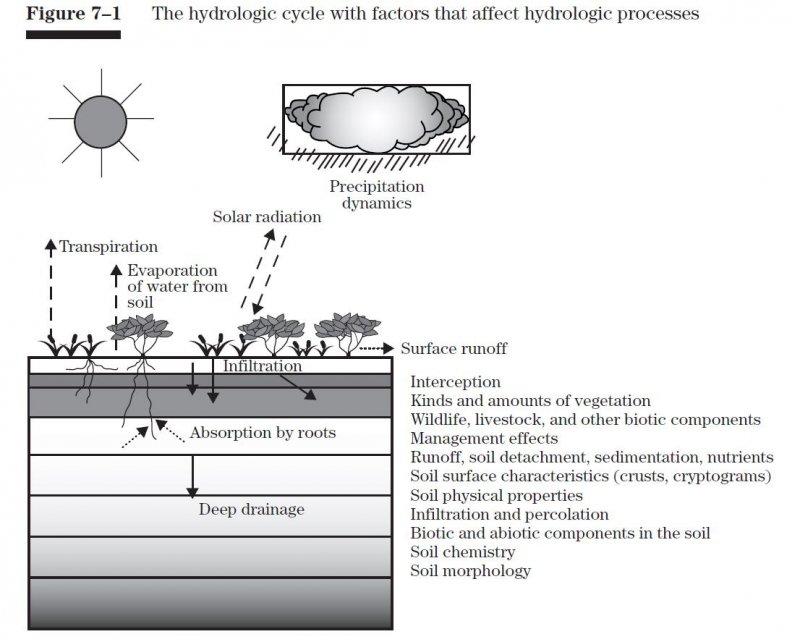
Figure 9.
Soil features
In a representative profile for the Low Stony Hill ecological site, these soils are very shallow or shallow to indurated limestone. Depth of bedrock ranges from 4 to 20 inches. The soil is a black clayey soil and is neutral to alkaline. Subrounded to angular gravels, cobbles, and stones of limestone comprise 35 to 70 percent by volume of the soil. Surface fragments reduce surface evaporation and help protect palatable grasses and forbs from overuse. The soils are fertile, usually have good structure, and take in water readily. Their fertility and moisture-holding capacity, however, is limited by soil depth and fragment volume. Fractures in the limestone bedrock, on the other hand, generally contain fine soil particles and store moisture. Plant roots penetrate these cracks and crevices, and thus have access to more moisture and plant nutrients than is apparent in the soil. Forage produced on the site is of good quality. These sites occur on interfluves and sideslopes of ridges on dissected plateaus.
Due to the scale of mapping, there are inclusions of minor components of other soils within these mapping units. Before performing any inventories, conduct a field evaluation to ensure the soils are correct for the site.
The representative soil series associated with the Low Stony Hill ecological site is Eckrant.
Table 5. Representative soil features
| Parent material |
(1)
Residuum
–
limestone
|
|---|---|
| Surface texture |
(1) Very stony, extremely stony clay (2) Very cobbly, cobbly clay |
| Drainage class | Well drained |
| Permeability class | Moderately slow to slow |
| Depth to restrictive layer | 4 – 20 in |
| Soil depth | 4 – 20 in |
| Surface fragment cover <=3" | 15 – 30% |
| Surface fragment cover >3" | 2 – 20% |
| Available water capacity (0-20in) |
0.1 – 2.2 in |
| Calcium carbonate equivalent (0-20in) |
20% |
| Electrical conductivity (0-20in) |
2 mmhos/cm |
| Sodium adsorption ratio (0-20in) |
Not specified |
| Soil reaction (1:1 water) (0-20in) |
6.6 – 8.4 |
| Subsurface fragment volume <=3" (4-20in) |
5 – 20% |
| Subsurface fragment volume >3" (4-20in) |
25 – 60% |
Ecological dynamics
The reference plant community, which was a diverse open grassland with scattered Texas live oak (Quercus fusiformis) motts and trees, is the diagnostic or reference plant community. The information contained in this description is based on historical accounts, previous range site descriptions, field data, and professional consensus. Grass species included little bluestem (Schizachyrium scoparium), big bluestem (Andropogon gerardii), Indiangrass (Sorghastrum nutans), sideoats grama (Bouteloua curtipendula), and some Eastern gamagrass (Tripsacum dactyloides). Other important species include green sprangletop (Leptochloa dubia), Texas wintergrass (Nassella leucotricha), and kidneywood (Eysenhardtia texana). Continued overuse, exacerbated by droughts, has brought about the removal of these and many other species from a large portion of the site. Low successional, unpalatable grasses, forbs, and shrubs have taken the place of the more desirable plant species. The loss of topsoil and soil organic matter makes it almost impossible for these abused areas to return to the reference plant community in a reasonable period of time. The diversity of native forbs and grasses has been dramatically reduced, while the presence of introduced and non-native species seems to be increasing daily. However, little bluestem and other native species will slowly return to the site with a sound range management program mimicking the historic management.
A study of early photographs of this region reveals that today these sites are much denser with woody cover and less covered with grasslike vegetation. Early accounts consistently describe this region as a vast expanse of hills covered with "cedar" from San Antonio to Austin. Accounts also describe an abundance of clean, flowing water and abundant wildlife. These accounts seem to describe heavy wooded areas in mosaic patterns occurring along the highs and lows of the landscape. The shallow soils of the Low Stony Hill site are located on the footslopes of hills in the area.
The plant communities of this site are dynamic and vary in relation to grazing, fire, and rainfall. Studies of the pre-European vegetation of the general area suggested 47 percent of the area was wooded (Wills, 2006). Historical records are not specific on the Low Stony Hill site but do reflect area observations. From the Teran expedition in 1691, “great quantities of buffaloes” were noted in the area. By 1840 the Bonnell expedition reflected that “buffalo rarely range so far to the south” (Inglis, 1964). Another example is an early settler, Arnold Gugger, who wrote in his journal about the mid to late 1800s in the Helotes, Texas area, “in those days buffaloes were in droves by the hundreds…..and antelopes were three to four hundred in a bunch….and deer and turkeys at any amount” (Massey, 2009).
Many research studies document the interaction of bison grazing and fire (Fuhlendorf, et al., 2008). Bison would come into an area, graze it down, leave and then not come back for many months or even years. Many times this grazing scheme by buffalo was high impact and followed fire patterns and available natural water. This usually long deferment period allowed the taller grasses and forbs to recover from the high impact bison grazing. This relationship created a diverse landscape both in structure and composition.
Species, such as Ashe juniper (Juniperus ashei), would invade the site, but not at the level seen today. Periodic fires set either by Native Americans or by lightning kept Ashe juniper and other woody species under control. Woody plant control would vary in accordance with the intensity and severity of the fire encountered, which resulted in a mosaic of vegetation types within the same site.
The periodic fires kept Ashe juniper (a non-sprouter) and other woody species suppressed except for the area where fuel loads were sparse or terrain precluded burning. Ashe juniper did occur on the site, but not near the level seen today because of its fire sensitivity. The degree of suppression of re-sprouting woody plants would vary in accordance with the type of fire encountered, which resulted in a mosaic of vegetation types within the same site and changing over time.
Ashe juniper will increase regardless of grazing. Goats and possibly sheep will eat young juniper and when properly used, are an effective tool to maintain juniper (Taylor, 1997). The main role of excessive grazing relative to juniper is the removal of the fine fuel needed to carry an effective burn.
Ashe juniper, because of its dense low growing foliage, has the ability to retard grass and forb growth. Grass and forb growth can become nonexistent under dense juniper canopies. Many times there is a resurgence of the better grasses such as little bluestem when Ashe juniper is controlled and followed by proper grazing management. Seeds and dormant rootstocks of many plant species are contained in the leaf mulch and duff under the junipers.
Currently, cattle, white-tailed deer, horses, and exotic animals are the primary large herbivores. At settlement, large numbers of deer occurred, but as human populations increased (with unregulated harvest) their numbers declined substantially. Eventually, laws and restrictions on deer harvest were put in place which assisted in the recovery of the species. Females were not harvested for several decades following the implementation of hunting laws, which allowed population booms. In addition, suppression of fire favored woody plants which provided additional browse and cover for the deer. Because of their impacts on livestock production, large predators such as red wolves (Canis rufus), mountain lions (Felis concolor), black bears (Ursus americanus), and eventually coyotes (Canis latrins) were reduced in numbers or eliminated (Schmidly, 2002).
The screwworm fly (Cochilomyia hominivorax) was essentially eradicated by the mid-1960s, and while this was immensely helpful to the livestock industry, this removed a significant control on deer populations (Teer, Thomas, and Walker, 1965; Bushland, 1985).
Currently, due to the increase in land ownership for recreational purposes and a corresponding reduction in livestock production, predator populations are on the increase. This includes feral hogs (Sus scrofa).
Progressive management of the deer herd, because of their economic importance through lease hunting, has the objective of improving individual deer quality and improving habitat. Managed harvest based on numbers, sex ratios, condition, and monitoring of habitat quality has been effective on individual properties. However, across the Edwards Plateau, excess numbers still exist which may lead to habitat degradation and significant die-offs during stress periods such as extended droughts.
The Edwards Plateau is home to a variety of exotic ungulates, mostly introduced for hunting (Schmidly, 2002). These animals are important sources of income to some landowners, but as with the white-tailed deer, their populations must be managed to prevent degradation of the habitat for themselves as well as for the diversity of native wildlife in the area. Many other species of medium- and small-sized mammals, birds, and insects can have significant influences on the plant communities in terms of pollination, herbivory, seed dispersal, and creation of local disturbance patches, all of which contribute to the plant species diversity.
The tall grasses aided in increasing the infiltration of rainfall into the slowly permeable soil. The loss of soil organic matter because of overgrazing has a negative effect on infiltration. More rainfall is directed to overland flow, which causes increased soil erosion and flooding. Soils are also more prone to drought stress since organic matter acts like a sponge aiding in moisture retention for plant growth. Mulch buildup under the Ashe juniper canopy, following brush management and incorporation into the soil, can have a positive effect on increasing infiltration.
This site contains a large diversity of plants and this document does not attempt to cover them all. The intent of this document is to describe ecological processes on representative plants.
Plant Communities and Transitional Pathways (diagram)
A State and Transition Diagram for the Low Stony Hill Ecological Site (R081CY360TX) is depicted in this report. Descriptions of each state, transition, plant community, and pathway follow the model. Experts base this model on available experimental research, field observations, professional consensus, and interpretations. It is likely to change as knowledge increases.
Plant communities will differ across the MLRA because of the naturally occurring variability in weather, soils, and aspect. The Reference Plant Community is not necessarily the management goal; other vegetative states may be desired plant communities as long as the Range Health assessments are in the moderate and above category. The biological processes on this site are complex. Therefore, representative values are presented in a land management context. The species lists are representative and are not botanical descriptions of all species occurring, or potentially occurring, on this site. They are not intended to cover every situation or the full range of conditions, species, and responses for the site.
Both percent species composition by weight and percent canopy cover are described as are other metrics. Most observers find it easier to visualize or estimate percent canopy for woody species (trees and shrubs). Canopy cover can drive the transitions between communities and states because of the influence of shade and interception of rainfall. Species composition by dry weight is used for describing the herbaceous community and the community as a whole. Woody species are included in species composition for the site. Calculating similarity index requires the use of species composition by dry weight.
The following diagram suggests some pathways that the vegetation on this site might take. There may be other states not shown in the diagram. This information is intended to show what might happen in a given set of circumstances. It does not mean that this would happen the same way in every instance. Local professional guidance should always be sought before pursuing a treatment scenario.
State and transition model
More interactive model formats are also available.
View Interactive Models
Click on state and transition labels to scroll to the respective text
Ecosystem states
| T1A | - | Absence of disturbance and natural regeneration overtime |
|---|---|---|
| T1B | - | Removal of woody species coupled with range seeding |
| R2A | - | Reintroduction of natural disturbance regimes |
| T2A | - | Removal of woody species coupled with range seeding |
| T2B | - | Mechanical conversion of juniper to mulch |
State 1 submodel, plant communities
State 2 submodel, plant communities
State 3 submodel, plant communities
State 4 submodel, plant communities
State 1
Reference
The reference state is considered to be representative of the natural range of variability under pre-Euro settlement conditions. This state is characterized by a diverse open grassland with scattered Texas live oak. Community phase changes are primarily driven by wildfire, grazing, and climatic variation.
Dominant plant species
-
Texas live oak (Quercus fusiformis), tree
-
little bluestem (Schizachyrium scoparium), grass
-
big bluestem (Andropogon gerardii), grass
-
Indiangrass (Sorghastrum nutans), grass
Community 1.1
Grassland Savannah Community

Figure 10. 1. Open Grassland with Oak Mottes Community
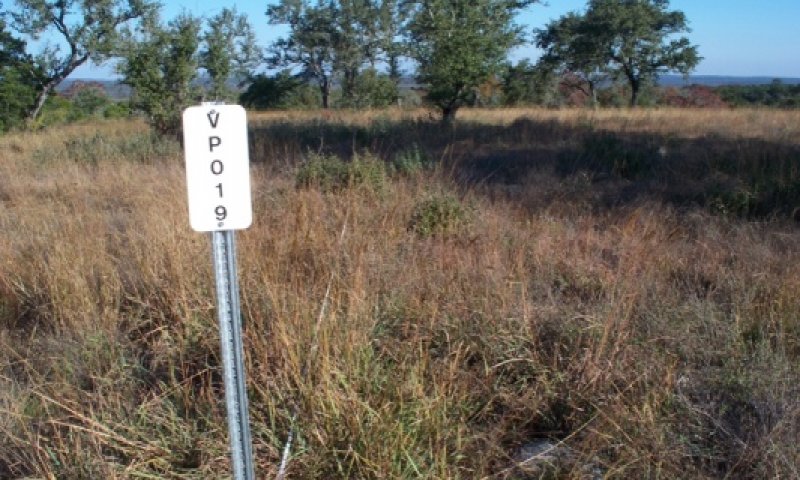
Figure 11. Grassland State, Eckrant Soil
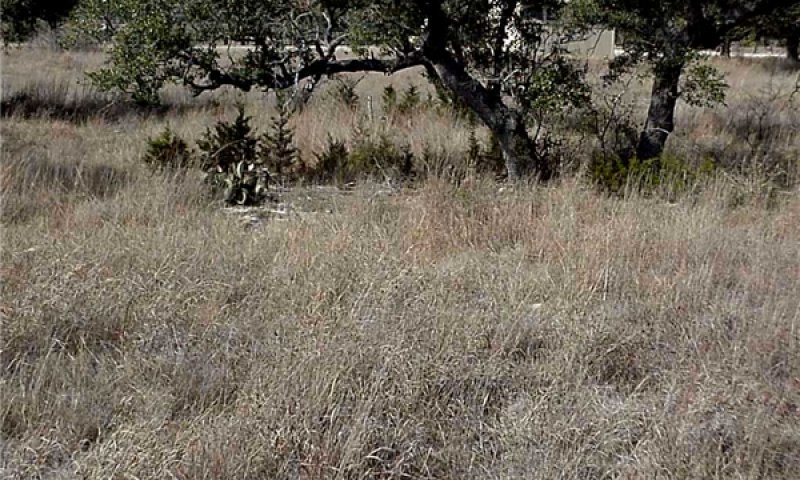
Figure 12. Grassland State, Eckrant Soil
The data for this community is derived from field data collections and professional consensus. This site is a fire managed, open warm-season, tall and midgrass, grassland with scattered oak mottes with about 10 to 20 percent tree canopy. The live oak is most abundant along watercourses, where elm (Ulmus spp.) and hackberry (Celtis spp.) trees also grow. Under a fire regime, the live oak can exist both as a tree and as a mott or thicket as it is a vigorous root sprouter. The herbaceous plant community is dominated by little bluestem. Indiangrass and big bluestem are subdominants, and may even dominate locally. Also native to the site, but occurring less frequency or in lesser amounts are the wildryes (Elymus spp.), Sideoats grama, tall dropseed (Sporobolus compositus), feathery bluestems (Bothriochloa spp.), green sprangletop (Leptochloa dubia), vine mesquite (Panicum obtusum), Texas wintergrass (Nassella leucotricha), and Texas cupgrass (Eriochloa sericea). The site also grows an abundance of forbs, shrubs and woody vines. Overstocking and thus overgrazing by domesticated animals can cause a decline and even the elimination of numerous plants from this community. As the plant community degenerates, big bluestem, little bluestem, Indiangrass, and the wildryes decrease. Sideoats grama, tall dropseed, silver bluestem, Texas wintergrass, and buffalograss (Bouteloua dactyloides) are initial increasers on the site. Prolonged overuse of these plants usually results in a community of Texas wintergrass, curlymesquite (Hilaria belangeri), buffalograss, and woody species. The following grasses and forbs are commonly found on this site in a deteriorated condition: Western ragweed (Ambrosia psilostachya), Broomweed (Amphiachyris spp.), prairie coneflower (Ratibida columnifera), Snow-on-the-Mountain (Euphorbia marginata), silverleaf nightshade (Solanum elaeagnifolium), milkweeds (Asclepias spp.), Leavenworth eryngo (Eryngium leavenworthii), twin-leaf senna (Cassia roemariana), gray goldaster (Heterotheca canescens), horehound (Marrabium vulgare), evax (Evax spp.), Texas grama (Bouteloua rigidiseta), hairy tridens (Erioneuron pilosum), red grama (Bouteloua trifida), tumblegrass (Schedonnardus panniculatus), windmillgrasses (Chloris spp.), and annual brome grasses (Bromus spp.).
Figure 13. Annual production by plant type (representative values) or group (midpoint values)
Table 6. Annual production by plant type
| Plant type | Low (lb/acre) |
Representative value (lb/acre) |
High (lb/acre) |
|---|---|---|---|
| Grass/Grasslike | 1430 | 1950 | 2275 |
| Forb | 330 | 450 | 525 |
| Tree | 330 | 450 | 525 |
| Shrub/Vine | 110 | 150 | 175 |
| Total | 2200 | 3000 | 3500 |
Table 7. Ground cover
| Tree foliar cover | 0-20% |
|---|---|
| Shrub/vine/liana foliar cover | 0-15% |
| Grass/grasslike foliar cover | 5-40% |
| Forb foliar cover | 0-15% |
| Non-vascular plants | 0% |
| Biological crusts | 0-3% |
| Litter | 70-80% |
| Surface fragments >0.25" and <=3" | 5-10% |
| Surface fragments >3" | 10-25% |
| Bedrock | 5-10% |
| Water | 0% |
| Bare ground | 0-10% |
Table 8. Canopy structure (% cover)
| Height Above Ground (ft) | Tree | Shrub/Vine | Grass/ Grasslike |
Forb |
|---|---|---|---|---|
| <0.5 | – | 0-2% | 5-10% | 5-10% |
| >0.5 <= 1 | – | 0-5% | 5-15% | 5-15% |
| >1 <= 2 | – | 0-10% | 15-40% | 5-15% |
| >2 <= 4.5 | 0-5% | 0-15% | 0-10% | 0-10% |
| >4.5 <= 13 | 5-15% | 5-15% | – | – |
| >13 <= 40 | 5-20% | – | – | – |
| >40 <= 80 | – | – | – | – |
| >80 <= 120 | – | – | – | – |
| >120 | – | – | – | – |
Figure 14. Plant community growth curve (percent production by month). TX3760, Warm Season Native Grasses. Native warm season grasses on rangeland with scattered oaks/junipers..
| Jan | Feb | Mar | Apr | May | Jun | Jul | Aug | Sep | Oct | Nov | Dec |
|---|---|---|---|---|---|---|---|---|---|---|---|
| J | F | M | A | M | J | J | A | S | O | N | D |
| 3 | 3 | 5 | 13 | 22 | 15 | 5 | 3 | 15 | 7 | 5 | 4 |
Community 1.2
Savannah Shrubland Community
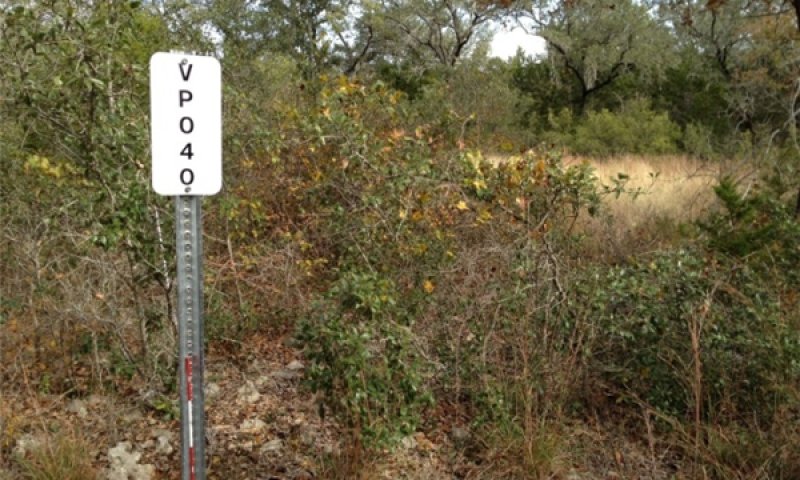
Figure 15. Photo 4. Savannah Shrubland Community, Eckrant So
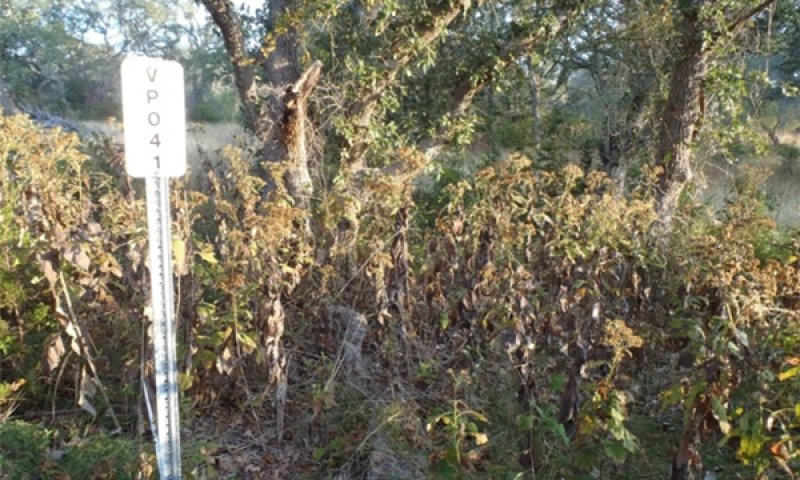
Figure 16. Photo 5 Savannah Shrubland Community
This community closely resembles the reference plant community of an open grassland with interspersed mottes of live oak and other oak species. The elimination of fire and brush management will allow for the invasion of woody plant species, both native and non-native. The main woody species to invade the site is Ashe juniper, usually introduced in wildlife droppings. The dominate grass species for the site are little bluestem, Indiangrass, big bluestem, and sideoats grama. There may be a shift from a little bluestem dominated plant community to a sideoats grama-Texas wintergrass-Silver bluestem (Bothriochloa laguroides) dominated plant community. This community 10-20 percent canopy cover Ashe juniper of 5 to 6 feet or less in height presents a critical decision point for the land resource manager and is at risk of crossing a threshold. Applying a prescribed burn or individual plant treatment of Ashe juniper at this time will allow the site to move back towards the reference plant community at a more reasonable cost than waiting until the juniper is too big. Once juniper gets to about 10 feet high, then options for fire and individual plant treatment become more limited. Applying no control methods at this time will allow the juniper to increase in size and density with a corresponding reduction in fine fuel production. The community is at risk and will transition to the Oak /Juniper State (2). To move from this community back toward the Savannah State (1) will take a more considerable investment of resources if not treated now.
Figure 17. Annual production by plant type (representative values) or group (midpoint values)
Table 9. Annual production by plant type
| Plant type | Low (lb/acre) |
Representative value (lb/acre) |
High (lb/acre) |
|---|---|---|---|
| Grass/Grasslike | 1302 | 1800 | 2100 |
| Forb | 330 | 450 | 525 |
| Tree | 330 | 450 | 525 |
| Shrub/Vine | 220 | 300 | 350 |
| Total | 2182 | 3000 | 3500 |
Figure 18. Plant community growth curve (percent production by month). TX3782, Open Grassland with Juniper Encroachment.
| Jan | Feb | Mar | Apr | May | Jun | Jul | Aug | Sep | Oct | Nov | Dec |
|---|---|---|---|---|---|---|---|---|---|---|---|
| J | F | M | A | M | J | J | A | S | O | N | D |
| 3 | 3 | 7 | 13 | 20 | 15 | 7 | 5 | 10 | 7 | 5 | 5 |
Pathway 1.1A
Community 1.1 to 1.2


Heavy continuous grazing/browsing reduces leaf tissue of palatable plants resulting in loss of sunshine energy through plants to the root system. This results in a less frequent fire regime. Woody species become established.
Pathway 1.2A
Community 1.2 to 1.1


Restoration of energy capture by tall grasses and mid grasses by implementing prescribed grazing and a return of fire will restore the plant composition and energy cycle. In some instances, IPT (Individual Plant Treatment) brush management is needed to selectively remove unwanted plants.
State 2
Encroached
This state is characterized by an increased density and cover of woody species. Juniper and oak trees impact hydrologic cycling by intercepting rainfall and competing with herbaceous species for soil moisture. Understory species also decline in vigor and reproductive capacity due to shading. Trees are controlling site resources.
Dominant plant species
-
Ashe's juniper (Juniperus ashei), tree
-
Texas live oak (Quercus fusiformis), tree
Community 2.1
Oak/Juniper Grassland Community
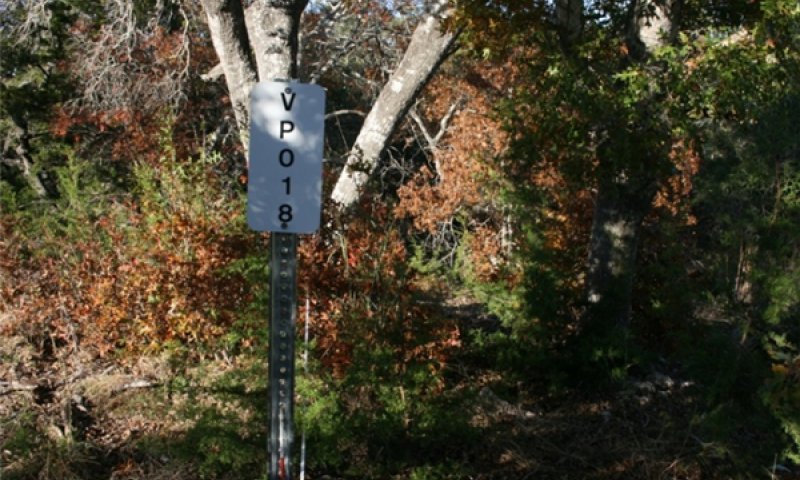
Figure 19. Photo 6. Oak/Juniper Grassland Community
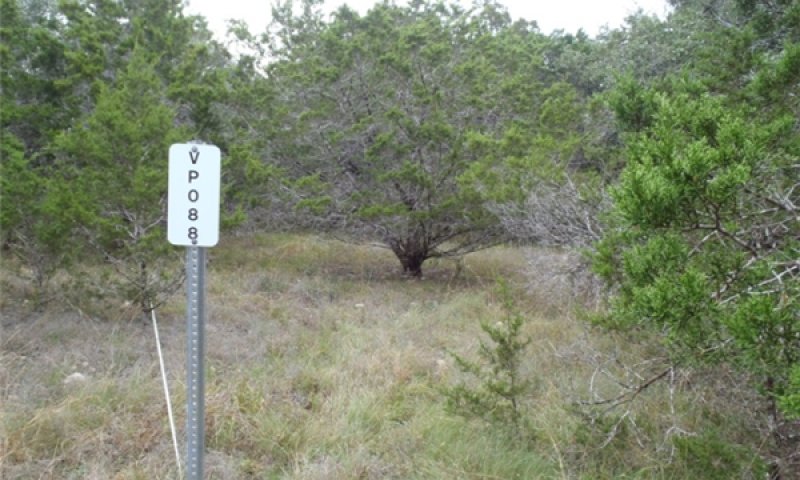
Figure 20. Photo 7. Oak/ Juniper Grassland Community
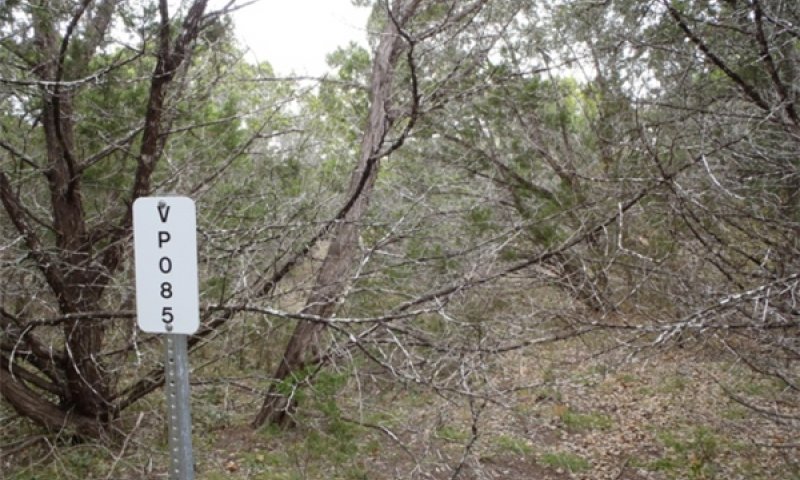
Figure 21. Photo 8 Oak/Juniper Grassland Community
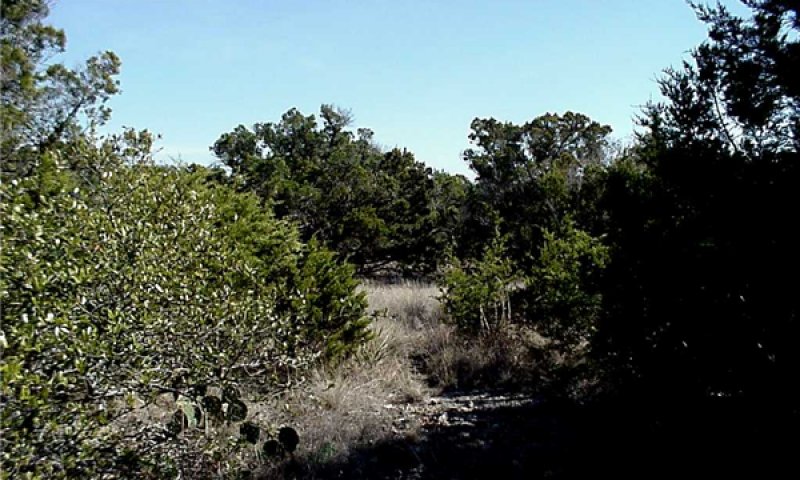
Figure 22. Photo 10. Oak/Juniper Grassland Community
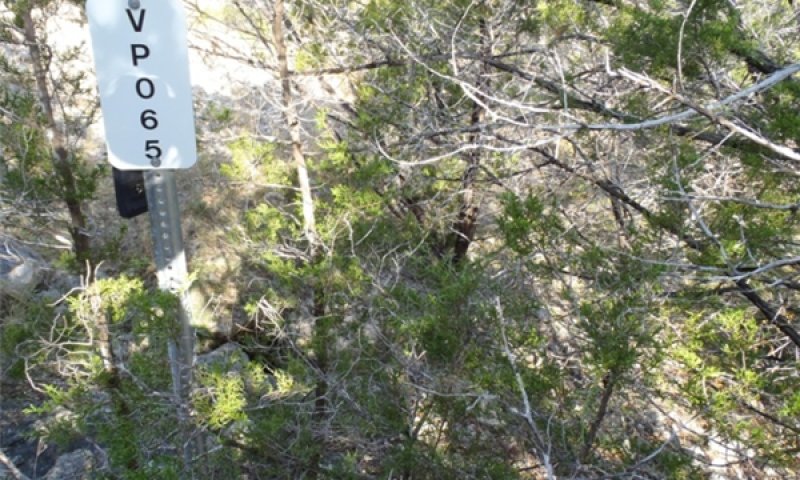
Figure 23. Photo 9. Oak/Juniper Grassland
The Oak/Juniper Grassland (2.1) developed because fire and brush management were removed. Many times brush has to increase to this level before natural resource managers recognize there is a problem. The cost involved in returning this to an open grassland community can be 2 to 4 times the cost of controlling the invading species in the previous community of Savannah Shrubland (1.2) since the threshold has been crossed. This community phase is characterized by 20-25 percent canopy cover of oak and 10-20 percent canopy cover juniper, 6 -15 feet in height. Herbaceous production of the key grazing plants such as little bluestem, Indiangrass, and sideoats grama is negatively impacted. Production may be reduced by 30 to 50 percent. There is no longer enough fine fuel to conduct a conventional prescribed burn. The decision to not perform brush management at this time will allow the site to transition to the Oak/Juniper/Mesquite Woodland Community (2.2). The invasion of juniper seems to build exponentially.
Figure 24. Annual production by plant type (representative values) or group (midpoint values)
Table 10. Annual production by plant type
| Plant type | Low (lb/acre) |
Representative value (lb/acre) |
High (lb/acre) |
|---|---|---|---|
| Grass/Grasslike | 675 | 1125 | 1350 |
| Tree | 450 | 750 | 900 |
| Shrub/Vine | 225 | 375 | 450 |
| Forb | 150 | 250 | 300 |
| Total | 1500 | 2500 | 3000 |
Figure 25. Plant community growth curve (percent production by month). TX3762, Oak/Juniper Grassland. "Grassland with warm season grasses, oaks, and juniper.".
| Jan | Feb | Mar | Apr | May | Jun | Jul | Aug | Sep | Oct | Nov | Dec |
|---|---|---|---|---|---|---|---|---|---|---|---|
| J | F | M | A | M | J | J | A | S | O | N | D |
| 3 | 5 | 8 | 13 | 18 | 12 | 5 | 3 | 12 | 10 | 7 | 4 |
Community 2.2
Oak/Juniper/Mesquite Woodland Community

Figure 26. Photo 11. Oak/Juniper/Mesquite Woodland
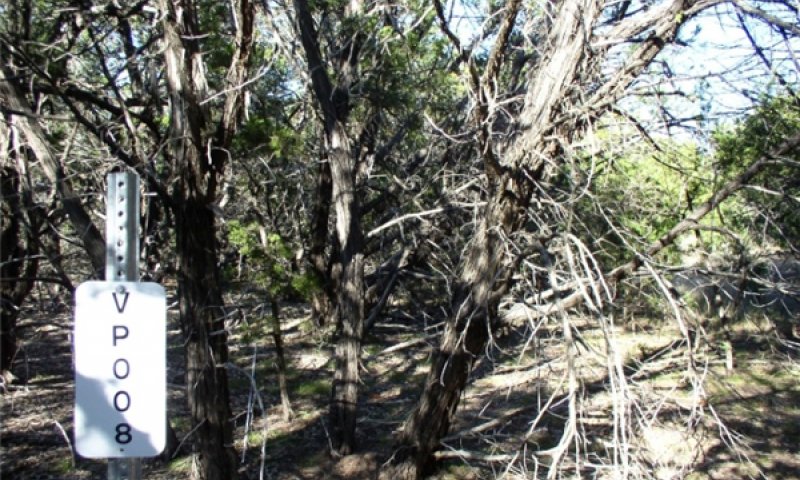
Figure 27. Photo 12. Oak/Juniper/Mesquite Woodland
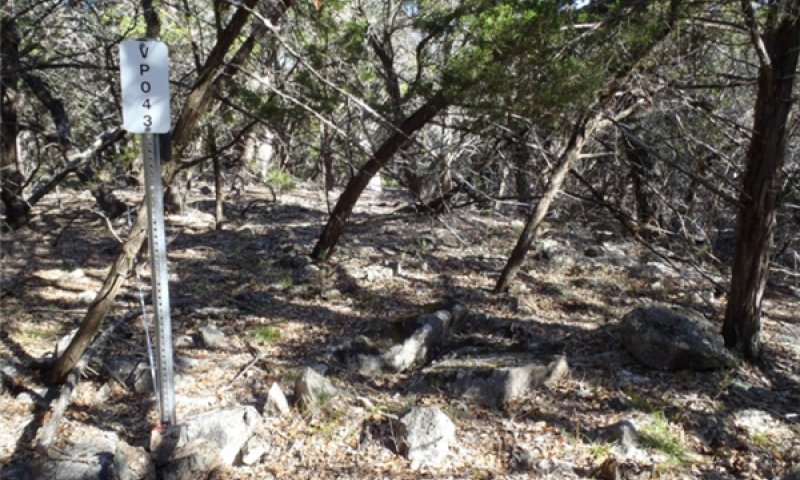
Figure 28. Photo 13. Oak/Juniper/Mesquite Woodland
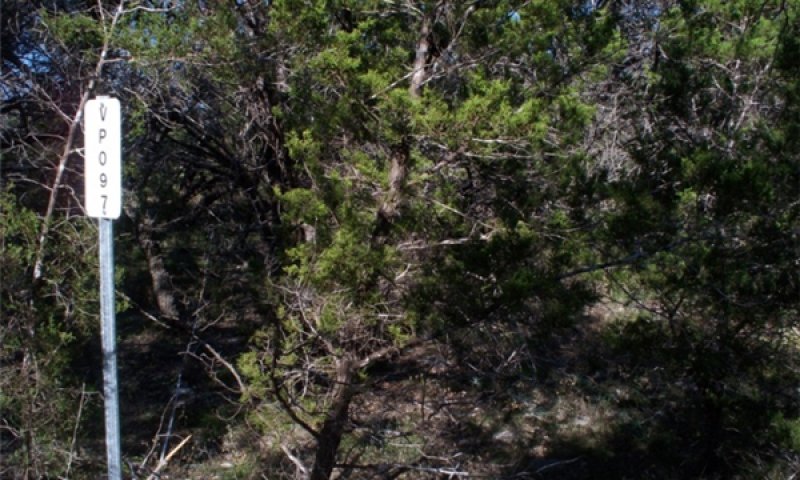
Figure 29. Photo 14. Oak/Juniper/Mesquite Woodland

Figure 30. Photo 15. Oak/Juniper/Mesquite Woodland
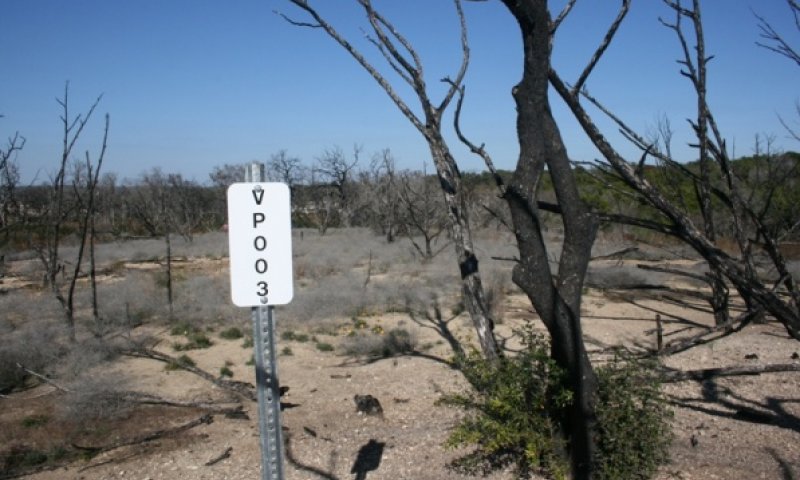
Figure 31. Photo 16. Severe wildlfire in this plant community.
The Oak/Juniper/Mesquite Woodland Community (2.2) has developed as a result of a major vegetational shift from the original plant community, which was a grassland with scattered oak mottes, to a plant community which is predominately tall woody plants and limited tall grass vegetation. This community phase is characterized by Ashe juniper 20 feet tall and taller, with canopies cover in excess of 25-30 percent. Grasslike vegetation is significantly reduced because of the severe competition from woody species for sunlight, nutrients, and moisture. Large areas that were once vast grasslands are now infested with a heavy woody cover consisting of species such as Ashe juniper, live oak, honey mesquite (Prosopis glandulosa), algerita (Mahonia trifoliata), Texas persimmon (Diospryos texana), elbowbush (Forestiera pubescens), and lotebush (Ziziphus obtusifolia). Management alone will not allow this community to shift back towards the reference community. Implementation of brush management programs involving heavy equipment may be the only option if the decision-maker desires to transition this site back towards the reference plant community. Some form of brush removal or reduction is needed to release the herbaceous plants to build fuel for a burn. By implementing other conservation measures such as prescribed burning and prescribed grazing, through time the land manager can move the community more toward a savannah. The elimination of fire plus the lack of brush management or targeted goat grazing allowed Ashe juniper and other woody species to overtake this site. Woody species dominate the site in this community with Ashe juniper being dominant. Shade tolerant species such as cedar sedge (Carex planostachys) and uniola species (Uniola spp.) dominate the understory that is void of sunlight. The majority of the soil surface on this densely canopied site will have a thick mat of cedar duff and other woody tree and shrub leaf material. The open areas between canopies will produce a grass cover of primarily low successional species such as grammas, threeawns, tridens, and dropseeds. The total grasslike production potential for this community is severely restricted.
Figure 32. Annual production by plant type (representative values) or group (midpoint values)
Table 11. Annual production by plant type
| Plant type | Low (lb/acre) |
Representative value (lb/acre) |
High (lb/acre) |
|---|---|---|---|
| Tree | 600 | 1000 | 1200 |
| Grass/Grasslike | 450 | 750 | 900 |
| Shrub/Vine | 375 | 625 | 750 |
| Forb | 75 | 125 | 150 |
| Total | 1500 | 2500 | 3000 |
Figure 33. Plant community growth curve (percent production by month). TX3763, Oak/Juniper Woodland. Oak/Juniper Woodland.
| Jan | Feb | Mar | Apr | May | Jun | Jul | Aug | Sep | Oct | Nov | Dec |
|---|---|---|---|---|---|---|---|---|---|---|---|
| J | F | M | A | M | J | J | A | S | O | N | D |
| 5 | 7 | 8 | 12 | 15 | 10 | 5 | 4 | 12 | 10 | 7 | 5 |
Pathway 2.1A
Community 2.1 to 2.2


Sunlight is now increasingly devoted to the woody plant community. The woody plant group is overtopping the herbaceous plant group. The hydrologic cycle favors the woody plant through interception and stem flow. Lack of brush management allows this to happen.
State 3
Open Grassland State
This state is characterized by the removal of woody species followed by seeding non-native herbaceous species. Hydrologic cycling is similar to reference state, but the plant community is dominated by non-natives.
Dominant plant species
-
beardgrass (Bothriochloa), grass
-
silky bluestem (Dichanthium sericeum), grass
Community 3.1
Open Grassland Community

Figure 34. Photo 17. Open Grassland Community

Figure 35. Photo 18. Open Grassland Community
In some cases, attempts were made to remove most of the woody species. Sometimes this would have been a management goal and other times it may be a result of futility trying to farm a deeper soil phase of this site. Species composition of the grass and forb groups may be similar to that outlined under the reference plant community provided that the area has not been overgrazed for a number of years. If the area has been overgrazed for a number of years, then seeding will be required for the site to move back towards the reference plant community. Restoration of the site may have been done by range seeding which included exotic grasses or they may have been introduced to the site via hay, livestock, or wildlife. Examples of these grasses include old world bluestems (Bothriochloa ischaemum) and silky bluestem (Dichanthium sericeum). These plants have the ability to establish quickly and potentially dominate a site. Unless there was long term farming, which was rare, the woody plants will also re-establish. Many times these plants include some invasive natives such as persimmon, algerita, and others. Live oak and associated shrub species will need to be reduced significantly for the site to begin resembling the reference plant community (1). As time goes by, juniper will establish on the site. If integrated management action such as goat and/or possibly sheep grazing (Anderson, 2013), brush management or fires are not implemented, in as little as 5 to 10 years, the juniper and other species will have increased to the point where they utilize most of the sun’s energy and the herbaceous cover declines. The fuel for prescribed burning is lost. This plant community is at risk for transitioning into the Woodland Community (3.2). Fire and other brush management options will maintain the site in the Open Grassland (3.1) community. It will be difficult and one must be persistent as most of these species are resprouting species.
Figure 36. Annual production by plant type (representative values) or group (midpoint values)
Table 12. Annual production by plant type
| Plant type | Low (lb/acre) |
Representative value (lb/acre) |
High (lb/acre) |
|---|---|---|---|
| Grass/Grasslike | 1870 | 2550 | 2975 |
| Shrub/Vine | 110 | 150 | 175 |
| Tree | 110 | 150 | 175 |
| Forb | 110 | 150 | 175 |
| Total | 2200 | 3000 | 3500 |
Figure 37. Plant community growth curve (percent production by month). TX3768, Oak Motte/Shrubland. Oak motts with shrubs..
| Jan | Feb | Mar | Apr | May | Jun | Jul | Aug | Sep | Oct | Nov | Dec |
|---|---|---|---|---|---|---|---|---|---|---|---|
| J | F | M | A | M | J | J | A | S | O | N | D |
| 3 | 5 | 8 | 13 | 18 | 12 | 5 | 3 | 12 | 10 | 7 | 4 |
Community 3.2
Woodland Community
Without woody plant control, the Ashe juniper and mixed woody plants will increase until they dominate the site. At that point, a threshold has been crossed resulting in the Woodland Community (3.2). Fire is limited as a control method because of the lack of fuel to burn and the size of the juniper. It is doubtful any amount of deferment will restore the fuel load. In these cases, mechanical intervention is required. Additional seeding may be required and can restore some plant diversity to move this plant community back to the Open Grassland Community (3.1).
Figure 38. Annual production by plant type (representative values) or group (midpoint values)
Table 13. Annual production by plant type
| Plant type | Low (lb/acre) |
Representative value (lb/acre) |
High (lb/acre) |
|---|---|---|---|
| Tree | 750 | 1250 | 1750 |
| Shrub/Vine | 525 | 875 | 1225 |
| Grass/Grasslike | 150 | 250 | 350 |
| Forb | 75 | 125 | 175 |
| Total | 1500 | 2500 | 3500 |
Figure 39. Plant community growth curve (percent production by month). TX3768, Oak Motte/Shrubland. Oak motts with shrubs..
| Jan | Feb | Mar | Apr | May | Jun | Jul | Aug | Sep | Oct | Nov | Dec |
|---|---|---|---|---|---|---|---|---|---|---|---|
| J | F | M | A | M | J | J | A | S | O | N | D |
| 3 | 5 | 8 | 13 | 18 | 12 | 5 | 3 | 12 | 10 | 7 | 4 |
Pathway 3.1A
Community 3.1 to 3.2
The re-establishment of juniper and other woody species changes sunlight capture from herbaceous plants more to woody species. Rainfall again is captured in canopy or by stem flow to the base of woody species. The exotic grasses can function much the same as the native grasses hydrologically. Lack of intervention by IPT and fire allow this to shift. This shift can occur in as little as 5 years.
Pathway 3.2A
Community 3.2 to 3.1
If brush management and prescribed grazing are implemented, sunlight will be restored to the herbaceous plant community. The hydrologic cycle will be restored more to a grassland. Because of the exotic species, this community will not return to the Savannah State (1).
Community 4.1
Mulched Community
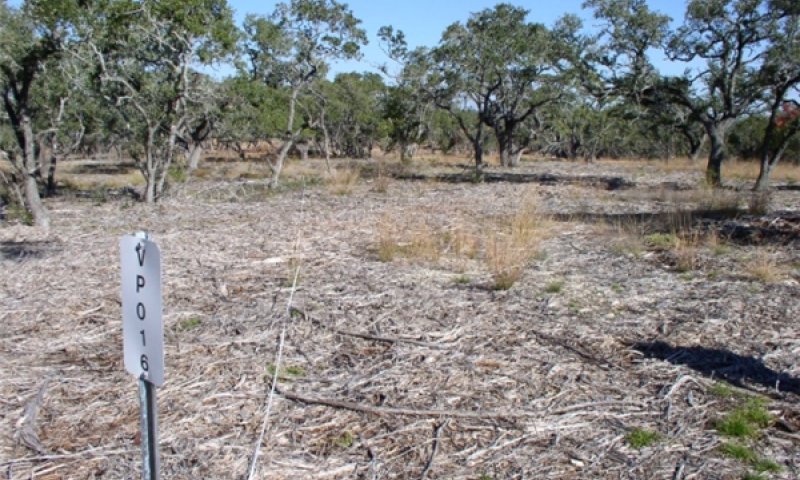
Figure 40. Photo 19. Mulched Community
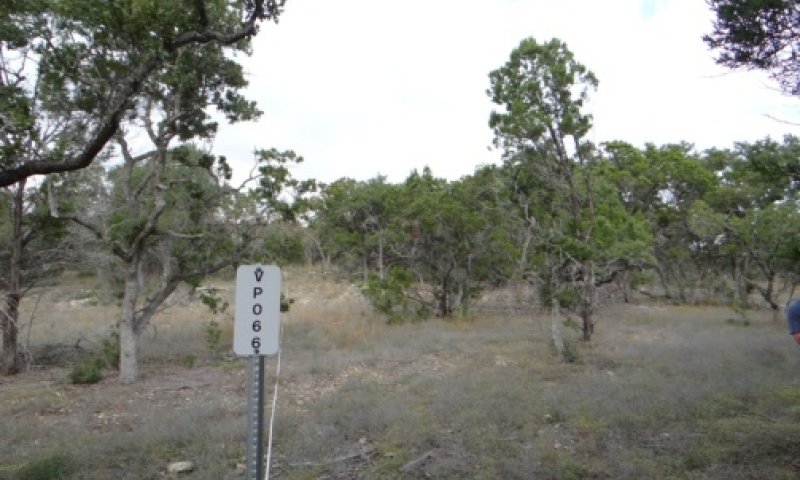
Figure 41. Photo 20. Mulched Community

Figure 42. Photo 21. Mulched Community

Figure 43. Photo 22. Mulched Community
This plant community is a result of using mechanical mulching to reduce canopy and structure of dense woody species which is usually juniper. The amounts of mulch on the ground and the orientation of the mulch are dependent upon the amount of woody cover treated and the time since treatment. The mulch tends to settle over time and is very resistant to deterioration. This community can structurally appear very similar to the reference plant community but without the herbaceous cover. The understanding of how this plant community reacts over time is unknown but studies are currently underway to monitor. One result is that the soil is protected for a long time. There will be a need for maintenance to treat juniper and other species as they re-establish.
Figure 44. Annual production by plant type (representative values) or group (midpoint values)
Table 14. Annual production by plant type
| Plant type | Low (lb/acre) |
Representative value (lb/acre) |
High (lb/acre) |
|---|---|---|---|
| Tree | 2125 | 2720 | 3230 |
| Forb | 125 | 160 | 190 |
| Grass/Grasslike | 125 | 160 | 190 |
| Shrub/Vine | 125 | 160 | 190 |
| Total | 2500 | 3200 | 3800 |
Figure 45. Plant community growth curve (percent production by month). TX3783, Hydro-Mulched Community. Scattered Oaks and shrubs in a heavily mulched area..
| Jan | Feb | Mar | Apr | May | Jun | Jul | Aug | Sep | Oct | Nov | Dec |
|---|---|---|---|---|---|---|---|---|---|---|---|
| J | F | M | A | M | J | J | A | S | O | N | D |
| 1 | 2 | 3 | 25 | 30 | 15 | 1 | 5 | 10 | 5 | 2 | 1 |
Transition T1A
State 1 to 2
Sunlight energy is being captured more by woody plants than by herbaceous plants. An increasing amount of rainfall is entrapped in the juniper canopy with less entering the soil rooting zone. Continued overgrazing/browsing, lack of the fire, and lack of brush management are responsible. Drought can hasten the process although a long term severe drought can result in the death of juniper.
Transition T1B
State 1 to 3
Mis-applied, brush management removes most of the woody species to restore the energy capture back to herbaceous plants. Range seeding is applied that sometimes includes exotic herbaceous species or they are introduced through hay, livestock, or wildlife. The hydrologic cycle resembles the reference plant community.
Restoration pathway R2A
State 2 to 1
Brush management and range planting, if needed, will change the plant community back to a more herbaceous plant community to capture sunlight. The hydrology is reclaimed with a higher percentage of rainfall entering the root zone for use by herbaceous plants. Fire and brush management will be needed to maintain the recovery.
Transition T2A
State 2 to 3
Mis-applied, brush management removes most of the woody species to restore the energy capture back to herbaceous plants. Range seeding is applied that sometimes includes exotic herbaceous species or they are introduced through hay, livestock, or wildlife. The hydrologic cycle resembles the reference plant community.
Transition T2B
State 2 to 4
Mechanical conversion of primarily juniper canopy to a mulch cover restores the energy flow to the remaining species, usually oak. The hydrologic cycle retains nearly all the rainfall because of the heavy mulch. Little evaporation takes place.
Additional community tables
Table 15. Community 1.1 plant community composition
| Group | Common name | Symbol | Scientific name | Annual production (lb/acre) | Foliar cover (%) | |
|---|---|---|---|---|---|---|
|
Grass/Grasslike
|
||||||
| 1 | Tallgrass | 1100–1450 | ||||
| little bluestem | SCSC | Schizachyrium scoparium | 850–1100 | – | ||
| Indiangrass | SONU2 | Sorghastrum nutans | 150–250 | – | ||
| big bluestem | ANGE | Andropogon gerardii | 150–250 | – | ||
| eastern gamagrass | TRDA3 | Tripsacum dactyloides | 50–100 | – | ||
| 2 | Midgrasses | 250–350 | ||||
| sideoats grama | BOCU | Bouteloua curtipendula | 100–200 | – | ||
| vine mesquite | PAOB | Panicum obtusum | 100–150 | – | ||
| plains lovegrass | ERIN | Eragrostis intermedia | 50–100 | – | ||
| Texas cupgrass | ERSE5 | Eriochloa sericea | 50–100 | – | ||
| green sprangletop | LEDU | Leptochloa dubia | 25–50 | – | ||
| 3 | Midgrasses | 150–250 | ||||
| composite dropseed | SPCOC2 | Sporobolus compositus var. compositus | 75–100 | – | ||
| Drummond's dropseed | SPCOD3 | Sporobolus compositus var. drummondii | 50–100 | – | ||
| cane bluestem | BOBA3 | Bothriochloa barbinodis | 75–100 | – | ||
| silver beardgrass | BOLAT | Bothriochloa laguroides ssp. torreyana | 50–75 | – | ||
| slim tridens | TRMU | Tridens muticus | 25–50 | – | ||
| threeawn | ARIST | Aristida | 25–50 | – | ||
| 4 | Short Grasses | 50–150 | ||||
| buffalograss | BODA2 | Bouteloua dactyloides | 50–100 | – | ||
| curly-mesquite | HIBE | Hilaria belangeri | 50–100 | – | ||
| fall witchgrass | DICO6 | Digitaria cognata | 25–50 | – | ||
| 5 | Cool Season Grasses | 0–100 | ||||
| Canada wildrye | ELCA4 | Elymus canadensis | 50–100 | – | ||
| Virginia wildrye | ELVI3 | Elymus virginicus | 50–100 | – | ||
| Texas wintergrass | NALE3 | Nassella leucotricha | 50–100 | – | ||
| cedar sedge | CAPL3 | Carex planostachys | 25–50 | – | ||
|
Forb
|
||||||
| 6 | Forbs | 40–100 | ||||
| Cuman ragweed | AMPS | Ambrosia psilostachya | 25–50 | – | ||
| white sagebrush | ARLUM2 | Artemisia ludoviciana ssp. mexicana | 25–50 | – | ||
| Berlandier's sundrops | CABE6 | Calylophus berlandieri | 25–50 | – | ||
| prairie clover | DALEA | Dalea | 25–50 | – | ||
| zarzabacoa comun | DEIN3 | Desmodium incanum | 25–50 | – | ||
| bundleflower | DESMA | Desmanthus | 25–50 | – | ||
| blacksamson echinacea | ECAN2 | Echinacea angustifolia | 25–50 | – | ||
| Engelmann's daisy | ENPE4 | Engelmannia peristenia | 25–50 | – | ||
| eastern milkpea | GARE2 | Galactia regularis | 25–50 | – | ||
| trailing krameria | KRLA | Krameria lanceolata | 25–50 | – | ||
| dotted blazing star | LIPU | Liatris punctata | 25–50 | – | ||
| Nuttall's sensitive-briar | MINU6 | Mimosa nuttallii | 25–50 | – | ||
| yellow puff | NELU2 | Neptunia lutea | 25–50 | – | ||
| beardtongue | PENST | Penstemon | 25–50 | – | ||
| snoutbean | RHYNC2 | Rhynchosia | 25–50 | – | ||
| meadow checkerbloom | SICA2 | Sidalcea campestris | 25–50 | – | ||
| fuzzybean | STROP | Strophostyles | 25–50 | – | ||
| Forb, annual | 2FA | Forb, annual | 1–25 | – | ||
|
Shrub/Vine
|
||||||
| 7 | Shrubs/Vines | 100–200 | ||||
| stretchberry | FOPU2 | Forestiera pubescens | 50–150 | – | ||
| bastard oak | QUSI | Quercus sinuata | 50–100 | – | ||
| winged sumac | RHCO | Rhus copallinum | 50–100 | – | ||
| gum bully | SILAO | Sideroxylon lanuginosum ssp. oblongifolium | 25–50 | – | ||
| greenbrier | SMILA2 | Smilax | 25–50 | – | ||
| western white honeysuckle | LOAL | Lonicera albiflora | 25–50 | – | ||
| algerita | MATR3 | Mahonia trifoliolata | 25–50 | – | ||
| Texas redbud | CECAT | Cercis canadensis var. texensis | 25–50 | – | ||
| Texas persimmon | DITE3 | Diospyros texana | 25–50 | – | ||
| Texas kidneywood | EYTE | Eysenhardtia texana | 25–50 | – | ||
|
Tree
|
||||||
| 8 | Trees | 300–600 | ||||
| Texas live oak | QUFU | Quercus fusiformis | 150–400 | – | ||
| Nuttall oak | QUTE | Quercus texana | 25–100 | – | ||
| hackberry | CELTI | Celtis | 50–100 | – | ||
| Eve's necklacepod | STAF4 | Styphnolobium affine | 0–100 | – | ||
| elm | ULMUS | Ulmus | 50–100 | – | ||
| Ashe's juniper | JUAS | Juniperus ashei | 25–50 | – | ||
| walnut | JUGLA | Juglans | 25–50 | – | ||
| littleleaf leadtree | LERE5 | Leucaena retusa | 25–50 | – | ||
| black cherry | PRSE2 | Prunus serotina | 0–50 | – | ||
| sandpaper oak | QUVA5 | Quercus vaseyana | 0–50 | – | ||
Interpretations
Animal community
This site is used for the production of domestic livestock and to provide habitat for native wildlife and certain species of exotic wildlife. The site is somewhat accessible to use by cattle but is more accessible to deer, sheep, Angora goats, and meat goats. Global Positioning Systems studies reveal slopes above 11 percent are generally less accessible to cattle while sheep and goats can utilize slopes up to 45 percent. Also revealed is that cattle will avoid a site once it contains about 30 percent surface rocks. (Hanselka, et al.)
Cow-calf operations are the primary livestock enterprise although stocker cattle are also grazed. Sheep and goats were formerly raised in large numbers and are still present in reduced numbers. Carrying capacity has declined drastically over the past 100 years because of the deterioration of the reference plant community. A field assessment of vegetation is needed to determine stocking rates based on the forage needs of desired animal species.
Many species, including domestic livestock, use more than one ecological site to meet their habitat needs.
Managing all the grazing/browsing animals is important to keep populations in balance and provide an economically important ranching enterprise. Achieving a balance between woodland and more open plant communities on this site is an important key to deer management. Competition among deer, sheep, and goats is an important consideration in livestock and wildlife management and can cause damage to preferred vegetation.
Smaller mammals include many kinds of rodents, jackrabbit, cottontail rabbit, raccoon, skunks, opossum, and armadillo. Mammalian predators include coyote, red fox, gray fox, bobcat, and mountain lion. Many species of snakes and lizards are native to the site.
Many species of birds are found on this site including game birds, songbirds, and birds of prey. Major game birds that are economically important are Rio Grande turkey, bobwhite quail, and mourning dove. Turkey prefers plant communities with substantial amounts of shrubs and trees interspersed with grassland. Quail prefer plant communities with a combination of low shrubs, bunch grass, bare ground, and low successional forbs. The different species of songbirds vary in their habitat preferences. In general, a habitat that provides a large variety of grasses, forbs, shrubs, vines, and trees and a complex of grassland, savannah, shrubland, and woodland will support a good variety and abundance of songbirds. Prairie chickens (Tympanuchus spp.) were also noted in the general area. Birds of prey are important to keep the numbers of rodents, rabbits, and snakes in balance. The different plant communities of the site will sustain different species of raptors.
Various kinds of exotic wildlife have been introduced on the site including axis, sika, fallow and red deer, aoudad sheep, and blackbuck antelope. Their numbers should be managed in the same manner as livestock and white-tailed deer to prevent damage to the plant community. This is especially true for exotics such as axis deer which have the ability to switch their diet readily among different plant types rendering them highly competitive for the native white-tailed deer. Feral hogs are present and can cause damage when their numbers are not managed.
Plant Preference by Animal Kind:
This rating system provides general guidance as to animal forage preference for plant species. It also indicates possible competition and diet overlap between kinds of herbivores. Grazing preference changes from time to time, especially between seasons, and between animal kinds and classes. An animal’s preference or avoidance of certain plants is learned over time through grazing experience and maternal learning (http://extension.usu.edu/behave/Grazing). Preference does not necessarily reflect the ecological status of the plant within the plant community. For wildlife, plant preferences for food are rated. Refer to detailed habitat guides for a more complete description of a species habitat needs.
Legend
Rating Preference Description
P Preferred Percentage of plant in animal diet is greater than it occurs on the land
D Desirable Percentage of plant in animal diet similar to the percentage composition on the land
U Undesirable Percentage of plant in animal diet is less than it occurs on the land
N Not Consumed Plant would not be eaten under normal conditions. It is only consumed when other forages are not available
T Toxic Rare occurrence in diet and, if consumed in any tangible amounts results in death or severe illness in animal
X Used Degree of utilization unknown
Hydrological functions
The existing plant community with representative plant species, current soil conditions (soil health), current management, and climate determine the dynamics of the water cycle on this site. Plant and litter cover are important factors which protect the site from erosion; however, total production and particularly the types of plant species present have a greater impact on hydrologic dynamics infiltration capacity, runoff, and soil losses). For example, foliar cover values could be similar among the various states as depicted in the state and transition diagram; however, hydrology (infiltration capacity, water holding capacity, and runoff) will be different. The common denominator is not cover: the most important factors are the types of plants and their abundance on the site. Plant biomass of the desirable native grasses is the most important variable that is correlated with the hydrologic function on this site. Another important factor is the structure and morphology of the root system associated with plant species. Soil factors most associated with high hydrologic function are organic matter content, non-compacted soil surface (lower bulk density), intact soil structure, high porosity, high aggregate stability, and the presence of soil biotic factors, such as earthworms, fungi, blue-green algae, and mosses (when moist).
As the site becomes dominated by woody species, especially oaks and juniper, the water cycle altered. Interception of rainfall by tree canopies is increased which reduces the amount of rainfall reaching the surface. Stem flow is increased because of the funneling effect along the stems which increases soil moisture at the base of the tree. Increased transpiration, especially when evergreen species such as live oak and juniper dominate, provides less chance for deep percolation into aquifers. As woody species increase, grass cover declines, which causes some of the same results as heavy grazing, higher runoff, and erosion. Brush management combined with good grazing management can help restore the natural hydrology of the site.
The soils on this site are well drained with very low water holding capacity. Surface runoff can be rapid because of the slope and physiography of the site. Soils correlated with this site are in Hydrologic Groups C and D.
State 1: Savannah State
With reference to the transitional pathway diagram, the open grassland with oak mottes is associated with the maximum hydrologic function. The high degree of hydrologic function in State 1 is because of the dominance of rhizomatous tall and mid grasses (see narrative). As explained above, when properly managed, these species provide adequate cover. However, one of the keys to high hydrologic function is the structure or morphology of the root system. During high rainfall periods, water will percolate beyond the immediate surface root zone via fractures in the soil strata. As this water moves downward, it contributes to the recharge of aquifers if the underlying soils and geology are appropriate. When conditions are representative of the high composition of tall and midgrass species, little runoff occurs.
The reference plant community is dominated by tall bunchgrass species that are correlated with high hydrologic function. When conditions degrade, into states 2 and 3, the composition of desirable tall grasses decreases and mid and short grasses become more dominant. If soil conditions also degrade and management is consistent with overuse, hydrologic function decreases significantly.
The Grassland Savannah Community of State 1 features little bluestem as the dominant native grass species. The root system of little bluestem consists of a vast network of roots and masses of finely branched rootlets, some more than 30 inches in length. The largest roots are about 0.5 to 1mm in diameter. The soil beneath the grass crown and several inches to the sides are threaded with dense mats of roots to a depth of 4 to 5 feet. Stem bases and surface roots bind the soil in and around the plant bunches—most of the space between bunches is occupied by a dense network of roots. Litter cover accumulating during the winter months can provide protection from raindrop impact. Infiltration studies have shown that bluestem, Indiangrass, and sideoats grama are associated with higher infiltration capacity compared to other short-statured grasses which tend to have thicker fibrous surface roots (e.g., gramas, buffalograss, dropseeds, threeawn grasses). The thick fibrous root system of these grasses is associated with less infiltration capacity. (commonly associated with oat mottes), infiltration is rapid and immediate.
Model Predictions return periods based on 50 years climate data.
(Return)(Precip)(Runoff) (Erosion)
(Period)(in) (in) (t/ac)
---------------------------------
(50 yr) (52.7) (10.1) (1.3)
(25 yr) (49.5) (5.8) (1.1)
(10 yr) (44.5) (3.2) (0.6)
(5 yr) (40.1) (1.7) (0.3)
(2.5 yr)(35.6) (0.5) (0.1)
---------------------------------
(50 yr) (32.9) (0.9) (0.2)
(avg.)
Based on 50 years of climate data, there is an 82 percent chance there will be runoff and delivered sediment for these conditions. [Rangeland Hydrology and Erosion Model (RHEM) predictions—model calibrated from field data]. The average sediment to runoff ratio is (0.2/0.9 = 0.2. For every 1.0 inch of runoff, 0.2 t/ac soil erosion.
Community 1.2 Savannah Shrubland Community
This state is associated with 10 to 20 percent juniper canopy. There is also a shift to less desirable grasses. The consequence is that the hydrologic function decreases.
Model Predictions return periods based on 50 years climate data.
(Return)(Precip)(Runoff) (Erosion)
(Period)(in) (in) (t/ac)
---------------------------------
(50 yr) (52.7) (9.5) (4.3)
(25 yr) (49.5) (6.8) (2.7)
(10 yr) (44.5) (3.8) (2.1)
(5 yr) (40.1) (2.7) (1.0)
(2.5 yr)(35.6) (1.0) (0.6)
---------------------------------
(50 yr) (32.9) (1.4) (0.7)
(avg.)
Based on 50 years of climate data, there is a 98 percent chance there will be runoff and delivered sediment for these conditions. [Rangeland Hydrology and Erosion Model (RHEM) predictions—model calibrated from field data]. The average sediment to runoff ratio is (0.7/1.4 = 0.5. For every 1.0 inch of runoff, 0.5 t/ac soil erosion.
State 2: Oak-Juniper State
Woody species dominate the site in this community with Ashe juniper being the dominant plant.
Canopy exceeds 30 percent and shade tolerant species such as cedar sedge and uniola species dominate the understory that is void of sunlight. The majority of the soil surface on this densely canopied site will have a thick mat of cedar leaves and other woody tree and shrub leaf material. The open areas between canopies will produce a grass cover of primarily low successional species such as gramas, threeawns, tridens, and dropseeds. The total grasslike production potential for this community is severely restricted. These grasses do not protect the soil as the rooting systems are more shallow than the bluestems and other tall native grass species. Patches of bare ground become connected in the interspaces between trees. Plants become pedestalled and litter may be found in debris dams or lodged against rocks and brush. A significant amount of soil erosion occurs in these interspace areas and often the surface soil is severely depleted in old juniper stands.
(Return)(Precip)(Runoff) (Erosion)
(Period)(in) (in) (t/ac)
---------------------------------
(50 yr) (52.7) (11.8) (6.2)
(25 yr) (49.5) (7.4) (3.6)
(10 yr) (44.5) (4.1) (2.8)
(5 yr) (40.1) (3.5 (1.6)
(2.5 yr)(35.6) (1.7) (0.9)
---------------------------------
(50 yr) (32.9) (1.8) (1.1)
(avg.)
Based on 50 years of climate data, there is a 100 percent chance there will be runoff and delivered sediment for these conditions. [Rangeland Hydrology and Erosion Model (RHEM) predictions—model calibrated from field data]. The average sediment to runoff ratio is (1.1/1.8 = 0.6. For every 1.0 inch of runoff, 0.6 t/ac soil erosion.
Recreational uses
This site has the appeal of the wide open spaces. The abundant tall and mid grasses and scattered oaks produce beautiful fall color variations. The area is also used for hunting, birding, and other eco-tourism related enterprises.
Wood products
Honey mesquite and oaks can be used for firewood and the specialty wood industry.
Supporting information
Inventory data references
Information presented here has been derived from limited NRCS clipping data, field observations of range trained personnel and from research of historic observations.
Other references
References:
Anderson, J.R., C.A. Taylor, Jr., C.J. Owens, J.R. Jackson, D.K. Steele, and R. Brantley. 2013. Using experience and supplementation to increase juniper consumption by three different breeds of sheep. Rangeland Ecol. Management. 66:204-208. March.
Archer S. 1994. Woody plant encroachment into southwestern grasslands and savannas: rates, patterns and proximate causes. in: Ecological implications of livestock herbivory in the West, pp.13-68. Edited by M. Vavra, W. Laycock, R. Pieper, Society for Range Management Publication. , Denver, Colorado.
Bestelmeyer, B.T., J.R. Brown, K.M. Havsted, R. Alexander, G. Chavez, and J.E. Hedrick. 2003. Development and use of state-and-transition models for rangelands. Journal of Range Management. 56(2): 114-126.
Bushland, R.C. 1985. Eradication program in the southwestern United States. Symposium on eradication of the screwworm from the United States and Mexico. Misc. Pub. Entomol. Soc. Am., 62:12-15.
Foster, J.H. 1917. The spread of timbered areas in central Texas. Journal of Forestry 15:442-445.
Frost, C. C. 1998. Presettlement fire frequency regimes of the Unites States: a First Approximation. Tall Timbers Fire Ecology Conference Proceedings. No. 20. Tall Timbers Research Station. Tallahassee, FL.
Fuhlendorf, S. D., and Engle D.M., Kerby J., and Hamilton R. 2008. Pyric Herbivory: rewilding Landscapes through the Recoupling of Fire and Grazing. Conservation Biology. Volume 23, No. 3, 588-598.
Hamilton W. and D. Ueckert. 2005. Rangeland Woody Plant Control--Past, Present, and Future. Chapter 1 in: Brush Management-Past, Present, and Future. Texas A & M University Press. Pp.3-16.
Hanselka, W., R. Lyons, and M. Moseley. 2009. Grazing Land Stewardship – A Manual for Texas Landowners. Texas AgriLife Communications, http://agrilifebookstore.org.
Hart, C., R.T. Garland, A.C. Barr, B.B. Carpenter, and J.C. Reagor. 2003. Toxic Plants of Texas. Texas Cooperative Extension Bulletin B-6103 11-03.
Inglis, J. M. 1964. A History of Vegetation on the Rio Grande Plains. Texas Parks and Wildlife Department, Bulletin No. 45. Austin, Texas.
Massey, C.L. 2009. The founding of a town – The Gugger and Benke families. Helotes Echo, July 1, 2009.
Natural Resources Conservation Service. 1994. The Use and Management of Browse in the Edwards Plateau of Texas. Temple, Texas.
Plant symbols, common names, and scientific names according to USDA/NRCS Texas Plant List (Unpublished)
Pyne, S.J. 1982. Fire in America. Princeton University Press, Princeton, NJ.
Roemer, Ferdinand Von. 1983. Roemer’s Texas. Eakins Press.
Schmidly, D.J. 2002. Texas natural history: a century of change. Texas Tech University Press, Lubbock.
Scifres, C.J. and W.T. Hamilton. 1993. Prescribed Burning for Brush Management: The South Texas Example. Texas A & M University Press, 245 pp.
Smeins, F., S. Fuhlendorf, and C. Taylor, Jr. 1997. Environmental and Land Use Changes: A Long Term Perspective. Chapter 1 in: Juniper Symposium 1997. Texas Agricultural Experiment Station. Pp 1-21.
Taylor, C.A. (Ed.). 1997. Texas Agriculture Experiment Station Technical Report 97-1 (Proceedings of the 1997 Juniper Symposium), Sonora Texas, pp. 9-22.
Teer, J.G., J.W. Thomas, and E.A. Walker. 1965. Ecology and Management of White-tailed Deer in the Llano Basin of Texas. Wildlife Monographs 10: 1-62.
Thurow, T.O. and J.W. Hester. 1997. 1997 Juniper Symposium. Texas Agricultural Experiment Station, The Texas A&M University System. Tech. Rep. 97-1. January 9-10, 1997. San Angelo, Texas
USDA-NRCS (Formerly Soil Conservation Service) Range Site Description (1972)
Vines, R.A. 1984. Trees of Central Texas. University of Texas Press. Austin, Texas.
Weninger, D. 1984. The Explorer’s Texas. Eakin Press; Waco, Texas.
Wilcox. B.P. and T.L. Thurow. 2006. Emerging Issues in Rangeland Ecohydrology: Vegetation Change and the Water Cycle. Rangeland Ecol. Management. 59:220-224, March.
Wilcox, B.P., Y. Huang, and J.W. Walker. 2008. Long-term trends in stream flow from semiarid rangeland: uncovering drivers of change. Global Change Biology 14: 1676-1689, doi:10.1111/j.1365.2486.2008.01578.
Wilcox, B.P., W.A. Dugas, M.K. Owens, D.N Ueckert, and C.R. Hart. 2005. Shrub Control and Water Yield on Texas Rangelands: Current State of Knowledge. Texas Agricultural Experiment Station Research Report 05-1.
Wills, Frederick. 2006. Historic Vegetation of Camp Bullis and Camp Stanley, Southeastern Edwards, Plateau. Texas. Texas Journal of science. 58(3):219-230.
Wright, H.A. and A.W. Bailey. 1982. Fire Ecology: United States and Southern Canada. John Wiley & Sons, Inc.
Wu. B.X., E.J. Redeker, and T.L. Thurow. 2001. Vegetation and Water Yield Dynamics in an Edwards Plateau Watershed. Journal of Range Management. 54:98-105. March 2001.
http://extension.usu.edu/behave/accessed 6/6/13
Contributors
Carl Englerth
Joe Franklin, ZRMS, NRCS,S an Angelo Zone Office, Texas
K E Spaeth
Mark Moseley
Ryan McClintock, Biologist, NRCS, San Angelo Zone Office, Texas
Jessica Jobe, MLRA Leader, NRCS, Kerrville Soil Survey Office, Texas
Travis Waiser, Soil Scientist, NRCS, Kerrville Soil Survey Office, Texas
Bryan Hummel, Natural Resources Technician, DoD, Joint Base San Antonio-Camp Bullis, Texas
Approval
Bryan Christensen, 9/19/2023
Acknowledgments
Site Development and Testing Plan:
Future work, as described in a Project Plan, to validate the information in this Provisional Ecological Site Description is needed. This will include field activities to collect low, medium and high-intensity sampling, soil correlations, and analysis of that data. Annual field reviews should be done by soil scientists and vegetation specialists. A final field review, peer review, quality control, and quality assurance reviews of the ESD will be needed to produce the final document. Annual reviews of the Project Plan are to be conducted by the Ecological Site Technical Team.
Reviewers and Technical Contributors:
Ann Graham Editor NRCS Temple, Texas
QC/QA completed by:
Bryan Christensen, SRESS, NRCS, Temple, TX
Erin Hourihan, ESDQS, NRCS, Temple, TX
Rangeland health reference sheet
Interpreting Indicators of Rangeland Health is a qualitative assessment protocol used to determine ecosystem condition based on benchmark characteristics described in the Reference Sheet. A suite of 17 (or more) indicators are typically considered in an assessment. The ecological site(s) representative of an assessment location must be known prior to applying the protocol and must be verified based on soils and climate. Current plant community cannot be used to identify the ecological site.
| Author(s)/participant(s) | Mark Moseley |
|---|---|
| Contact for lead author | RMS, NRCS, Boerne, Texas |
| Date | 06/29/2005 |
| Approved by | Colin Walden |
| Approval date | |
| Composition (Indicators 10 and 12) based on | Annual Production |
Indicators
-
Number and extent of rills:
None. -
Presence of water flow patterns:
None, except following extremely high intensity storms when short flow patterns may exist. -
Number and height of erosional pedestals or terracettes:
None, except small ones in the shallowest part of the soil. -
Bare ground from Ecological Site Description or other studies (rock, litter, lichen, moss, plant canopy are not bare ground):
0-10 percent, non-connected. -
Number of gullies and erosion associated with gullies:
None. -
Extent of wind scoured, blowouts and/or depositional areas:
None. -
Amount of litter movement (describe size and distance expected to travel):
Minimal and short, less than 3-7". -
Soil surface (top few mm) resistance to erosion (stability values are averages - most sites will show a range of values):
Stability class range is expected to be 5-6. -
Soil surface structure and SOM content (include type of structure and A-horizon color and thickness):
Dark reddish brown clay surface with subrounded to angular pebbles, cobbles, and stones. Soil Organic Matter is 1 - 4 percent. -
Effect of community phase composition (relative proportion of different functional groups) and spatial distribution on infiltration and runoff:
High canopy of trees, bunch grasses and sod forming grasses, small interspaces should make rainfall impact negligible. Site is will drained, slowly permeable, 1-12 percent slopes. -
Presence and thickness of compaction layer (usually none; describe soil profile features which may be mistaken for compaction on this site):
No evidence of compaction. -
Functional/Structural Groups (list in order of descending dominance by above-ground annual-production or live foliar cover using symbols: >>, >, = to indicate much greater than, greater than, and equal to):
Dominant:
Warm-season tallgrassesSub-dominant:
Warm-season midgrasses Cool-season grasses TreesOther:
(S) warm season shortgrasses (M) forbs (M) shrubs (M).Additional:
Forbs make up 3 percent species composition while trees and shrubs compose of 20 percent species composition. -
Amount of plant mortality and decadence (include which functional groups are expected to show mortality or decadence):
Grasses usually show some mortality and decadence. -
Average percent litter cover (%) and depth ( in):
Litter is dominantly herbaceous. -
Expected annual annual-production (this is TOTAL above-ground annual-production, not just forage annual-production):
2200# for below average moisture years to 3500# for above average moisture years. -
Potential invasive (including noxious) species (native and non-native). List species which BOTH characterize degraded states and have the potential to become a dominant or co-dominant species on the ecological site if their future establishment and growth is not actively controlled by management interventions. Species that become dominant for only one to several years (e.g., short-term response to drought or wildfire) are not invasive plants. Note that unlike other indicators, we are describing what is NOT expected in the reference state for the ecological site:
Ashe juniper, old world bluestems, prickly pear and mesquite. -
Perennial plant reproductive capability:
All perennial plants should be capable of reproducing, except during periods of prolonged drought conditions, heavy natural herbivory or intense wildfires.
Print Options
Sections
Font
Other
The Ecosystem Dynamics Interpretive Tool is an information system framework developed by the USDA-ARS Jornada Experimental Range, USDA Natural Resources Conservation Service, and New Mexico State University.
Click on box and path labels to scroll to the respective text.
Ecosystem states
| T1A | - | Absence of disturbance and natural regeneration overtime |
|---|---|---|
| T1B | - | Removal of woody species coupled with range seeding |
| R2A | - | Reintroduction of natural disturbance regimes |
| T2A | - | Removal of woody species coupled with range seeding |
| T2B | - | Mechanical conversion of juniper to mulch |